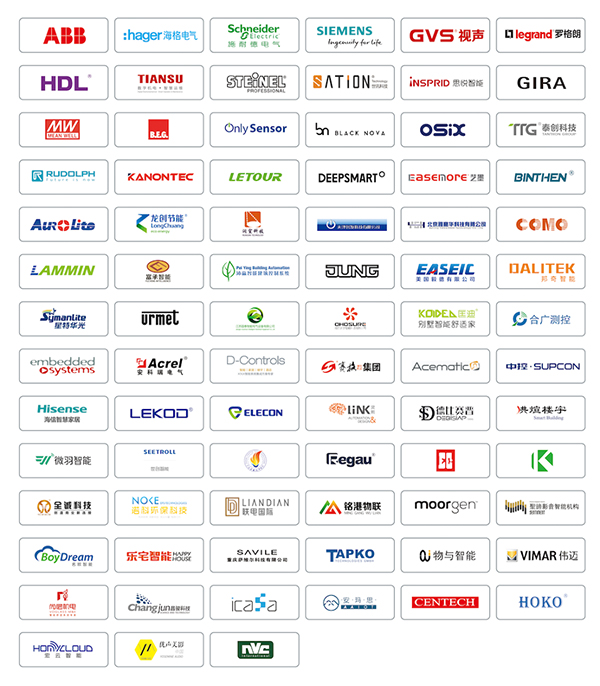In this exclusive interview with KNXtoday, President of KNX China, Jack He, discusses the progress KNX has made in China over the past decade, and what we can look forward to.

KNXtoday: Tell us a bit about you – how did you first get involved with KNX?
Jack He: I was first exposed to KNX some 14 years ago, at the beginning of my career, when I attended a KNX Forum in Beijing. Shortly thereafter, I joined automation product manufacturer, HDL, where I became CEO and remained until my appointment this year as President of KNX China. During my time at HDL, I gained a deeper knowledge of KNX and got a better appreciation of the advantages of KNX compared to technologies such as RS485, Zigbee, Wi-Fi etc, in the building control industry.
KNXtoday: What were the initial challenges that faced KNX in China when the national group was established in 2009?
Jack He: At the beginning, there were just a few companies and brands in KNX China national group, while the big players were from Europe. Most people thought KNX was only applicable to high-end projects because it was very expensive and technical expertise to install and program it was scarce. There were also concerns about service, as well as the sales/turnover of KNX products. However, KNX has shown that there are many ways to reach users and there is everything to play for, as China is such a huge market.

KNXtoday: How has KNX in China developed since?
Jack He: The number of KNX participants in China has increased significantly. There are more and more local companies investing in this market through hardware, software and gateways, whilst others are providing services such as installation, programming and project management. The current targets of KNX China national group include:
- Managing members.
- Training and testing services.
- Roadshows and exhibitions.
- Online promotions.
- Working with other associations.
Another trend in our market is that the technical capability of integration is becoming more mature, so there are a lot of projects that use a variety of different technologies. For example, there could be KNX, RS485, Zigbee and Wi-Fi products integrated into one system, and the only thing you need to have is a powerful/super gateway to manage all of the different protocols and data communications.
KNXtoday: What are the main achievements of KNX China national group so far?
Jack He: Commercial buildings and high-end smart home projects (both mass installation and single-home installation) are using more and more KNX products due to its high standards, ease of installation, interoperability with other technologies, and, most importantly, its compatibility across its member brands, meaning that system integrators can mix and match products from different suppliers. The word is spreading, and as more people talk about KNX, whether it be about its challenges or opportunities, KNX is gaining a voice within the smart home and building industry, as well as in other markets.
Add to this our efforts through forums, exhibitions and roadshows in different cities, and you will see a growing awareness of KNX technology across the board among systems integrators, designers, architects, project owners and installation companies.
KNXtoday: How is the development of KNX products in China progressing – are you using domestic products or still having to import many KNX products?
Jack He: The number of local KNX players is much greater than before, so we have a lot of KNX-certified domestic products. Obviously, in some cases, we still need to import KNX products from KNX members in other countries because clients are free to choose the products/styles that best suit their requirements/taste, and these may come from abroad.

The challenges that KNX China members face is the lack of qualified engineers who can develop products, the long process involved, and managing the product life cycle. It’s a headache for many companies if we are going to talk about second- or third-generation KNX products. In other words, developing KNX products is a little bit more expensive than other technologies.
KNXtoday: How has the building industry in China developed over recent times, and what are the main drivers?
Jack He: China’s economy, as well as its building industry, have developed rapidly over the past 30 years as a result of The Government’s ‘Reform and Opening-up’ policy and people’s desire for a better life – to stay with family, find good jobs, have a big house, enjoy new technology and products, live in a better environment, suffer less pollution, have better education etc.
The building industry plays an important role in industrialisation and urbanisation, so it has an important position in our society which contributes significantly to economic growth and employment opportunities. In such a large market, with 1.4 billion people, China has been one of the major energy consumers in the world, with buildings in China being responsible for over 2% of total energy consumption. This presents a great opportunity for KNX.
KNXtoday: What are the opportunities for KNX in China?
Jack He: Given the high cost of energy and operations management in buildings, KNX is in a prime position to be used to save energy and reduce costs. In addition, for larger buildings especially, KNX provides building owners with a new way of managing buildings, devices and emergency situations etc, thereby reducing the human resources required. From the outset, KNX has been used in commercial buildings, but it is now present in many residential projects too, so there are no limits to its application.
As far as the development of smart cities is concerned, the most popular LPWAN (Low Power Wide Area Networking) technologies in China are LoRa and NB-IoT, both of which have the advantage of being low-cost, with low data-rates and high-speed transmission. I see the possibility for KNX to be involved in smart cities as they develop, but before we can have a truly smart city, we need make sure every single space is controllable by a smart system.
KNXtoday: Which KNX projects particularly stand out for you?
Jack He: There are two projects which I would like to share with you. The first one is the new landmark in Beijing – Daxing International Airport, where smart control systems are supported by KNX products and technology. Up to 35,000 KNX logic blocks/command modules have been implemented in this project, to manage all lighting, air-conditioning, blinds and different scenes in different areas. It is one of the largest commercial KNX projects in the domestic market and indeed in the world.

The second one is a residential project in Shenzhen, namely China Jinmao Longhua Palace. This comprises 701 apartments in sizes from 180 square meters to 360 square meters, and has been totally ‘KNXed’ throughout. In each apartment there are nearly 70 KNX devices for lighting, heating, sensing, panels, logic, temperature control, blinds, voice control etc. It is the first time in China that KNX products have been used exclusively in a residential project. In total there are about 50,000 KNX devices under control and management in one single project. And it’s working just fine!

KNXtoday: What are your aims for KNX in the foreseeable future and what is your message to the market?
Jack He: Ideally, I would like to see more differentiation between software and hardware products from different players because currently, homogenisation is a big problem for most companies in the smart home and building industry, so we need more innovation and creativity.
My other concern is to increase awareness of KNX even further. This includes spreading the word about the latest KNX technologies such as KNX RF, KNX Secure and KNX IoT. We need to hold more events to educate the market, and we need more members to focus on KNX product development and how to provide better services to users.
If we can make the voice of KNX even louder within China, I am confident that the ‘KNX family’ can become one of the major players in our market.












